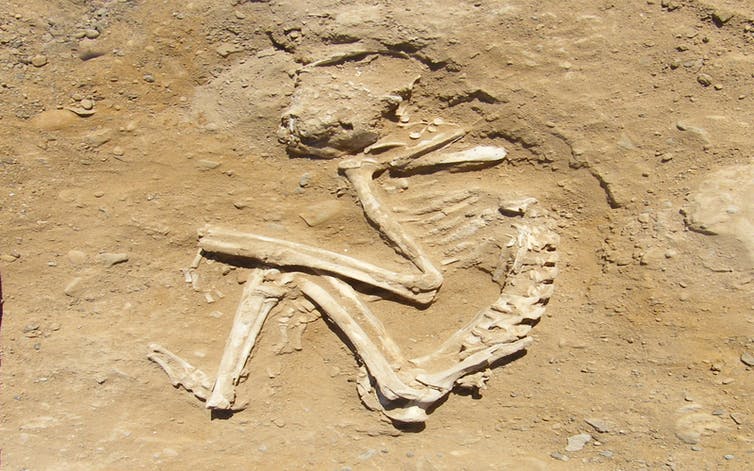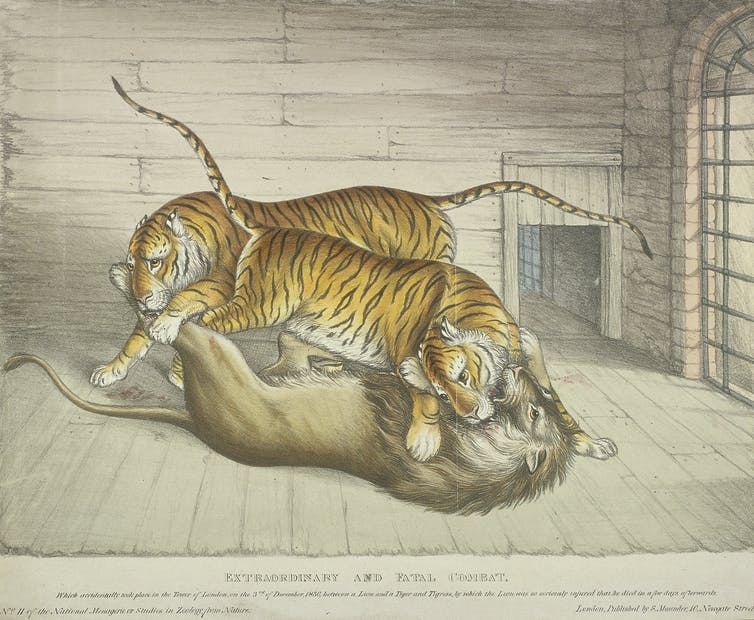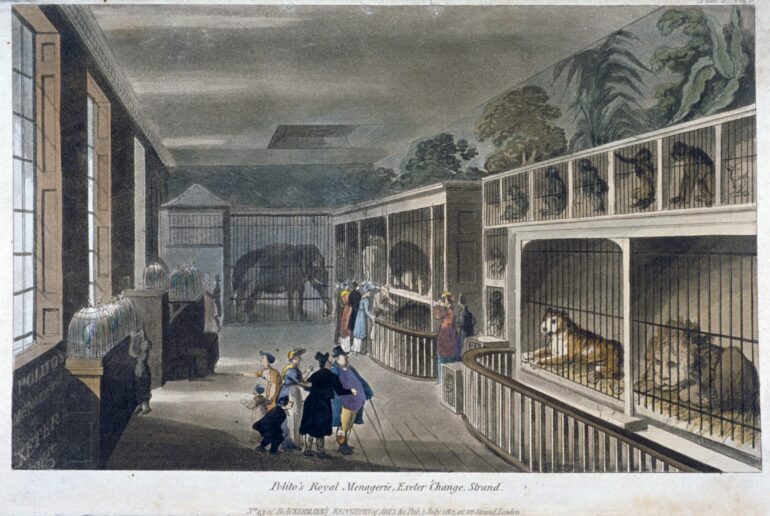
Curious Kids is a series for children of all ages. If you have a question you’d like an expert to answer, send it to [email protected].
Who made the first zoo? – Veronica, age 11, Accokeek, Maryland
The truth is historians don’t know who built the first zoo, or when it was built. But we can be confident it happened a very long time ago.
Human fascination with animals goes back as far as humans do. In the oldest cave paintings discovered, some of which are up to 40,000 years old, there are more images of animals than people.
At some point, humans began to capture and hold animals so they could look at them up close whenever they wanted.
Zoos for the lucky few to enjoy
The first known collections of exotic animals were held by royalty – and were not open to the public.

Remains of a baboon discovered in the ancient Egyptian cemetery of Hierakonpolis.
Renee Friedman, Courtesy of Hierakonpolis Expedition
Archaeological digs in the ancient Egyptian city of Nekhen have found buildings from around 3500 B.C. containing the remains of captive hippos, baboons and elephants – animals not native to Egypt. But life wasn’t easy for these animals. They probably had short lives, and their remains show evidence of severe injuries.
The tomb of the Egyptian pharaoh Sahure, who died around 2500 B.C., includes realistic images of Syrian bears wearing collars and leashes. It’s thought they had been brought back from a trading expedition. How long the bears lived is anyone’s guess.
Public zoos open to all
The first public exhibit of animals may have been created by Egypt’s Queen Hatshepsut around 1480 B.C. Researchers think the zoo was started with animals brought home from an expedition the queen sent to a far-off land known as Punt, which may have been modern-day Eritrea. It’s unclear why she built the zoo, but it might have been to show off her wealth and right to rule. Keeping dangerous and exotic animals in captivity has sometimes been a way for rulers to demonstrate how powerful they are.
Early zoos are found all over the world. In China, Emperor Wen-Wang is said to have built a “Garden of Intelligence” around 1060 B.C. It included deer, birds and many fish.
In England, King Henry I set up a menagerie in about 1110 as part of the royal estate at Woodstock, in Oxfordshire. His collection included tigers, camels, lions and porcupines. This collection eventually moved to the Tower of London in 1235, around the time King Henry III was given three lions by Holy Roman Emperor Frederick II. The Tower animal collection stayed at that location for 600 years.

Two tigers attack a lion in the Tower of London Menagerie on Dec. 3, 1830. The lion was so seriously injured, it died a few days later.
Heritage Images/Hulton Archives via Getty Images
If you visit the Tower today, you can see some…



